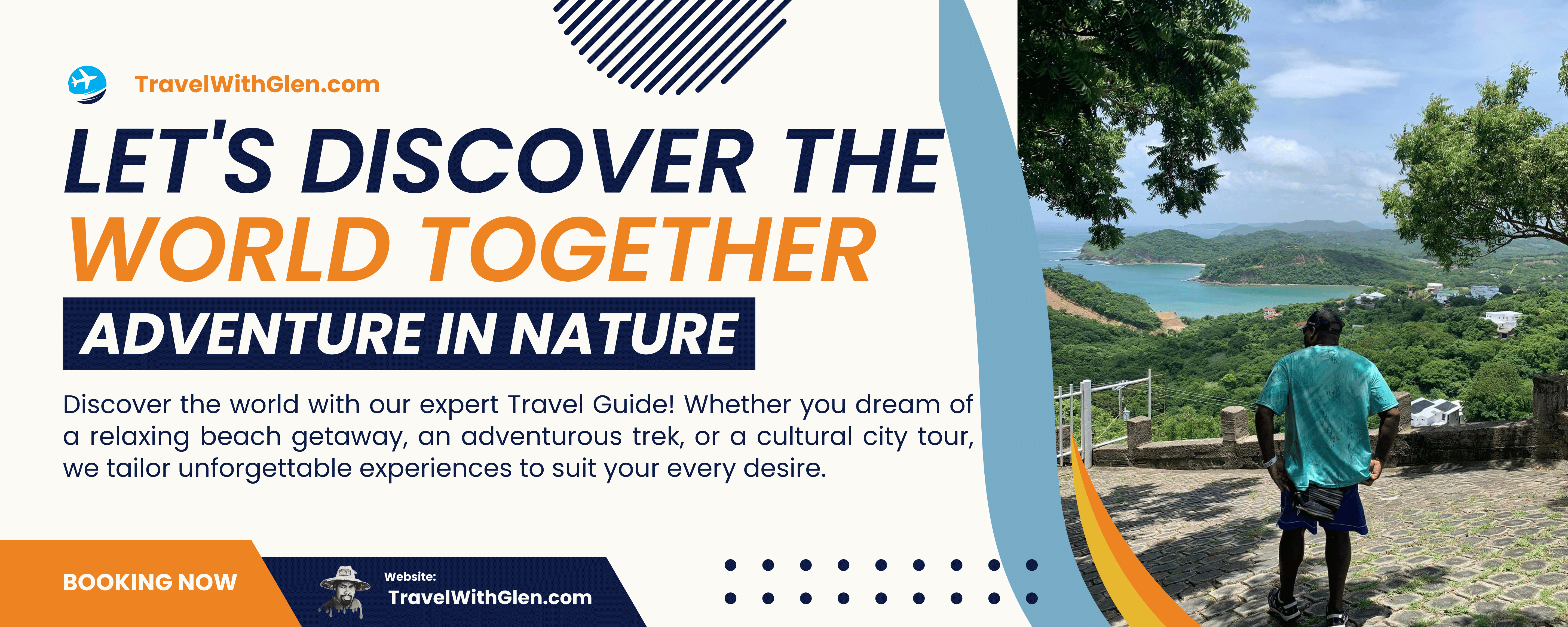Immersive travel experiences allows us to step outside our usual routines and dive deep into new cultures, landscapes, and ways of life. In a world where experiences often feel rushed and superficial, these journeys invite us to connect more profoundly with our surroundings. Let’s explore what makes immersive travel a transformative experience, and how you can make the most of your next adventure.
What is Immersive Travel?
Immersive travel is a concept that transcends traditional sightseeing. It’s about engaging your senses and experiencing destination life from the inside out. Imagine walking through the bustling markets of Marrakech, where the vibrant colors and aromas engulf you, or listening to the soft whispers of nature while hiking the lush trails of the Amazon rainforest. This type of travel invites you to be an active participant rather than a mere observer.
At its core, immersive travel fosters a deep connection with the places you visit. It encourages travelers to interact with locals, learn their stories, and appreciate their customs and traditions. This creates a bond that often results in a more meaningful adventure. You’re not just checking items off a bucket list; you’re building lifelong memories that will resonate in your heart.
In many ways, immersive travel can change perspectives. Rather than just observing, you become part of the narrative. Think about it—how often do you recall a trip for one stunning viewpoint, versus a memorable conversation shared with a local? Those anecdotes are what enrich our travels and provide depth to our experiences.
The Benefits of Immersive Travel
Immersive travel opens a door to personal growth that most conventional trips fail to achieve. By fully engaging with different cultures, you develop a broader outlook on life. Whether it’s savoring unfamiliar dishes or participating in local festivals, these experiences can reshape how you view the world and your place in it. You will be amazed at how small changes in perspective can lead to big changes in life.
Additionally, the friendships forged during immersive travel are often profound and lasting. Meeting individuals from various backgrounds can lead to lifelong connections that span continents, providing you support and perspectives long after your journey ends. The sense of community that emerges during these interactions fosters an enriching tapestry of shared knowledge and experiences.
Furthermore, immersive travel encourages empathy and understanding. By diving into another culture, you can appreciate the struggles and joys of different people, leading to greater compassion in an increasingly divided world. This understanding promotes a sense of global citizenship, making you more aware of the impact of your actions and choices.
Lastly, immersing yourself in new environments can reignite a sense of adventure and curiosity. It encourages spontaneity, far removed from the rigid itineraries of typical tourism. This fosters a mindset of exploration that extends well beyond the trip; you become more adventurous in daily life too.
How to Plan an Immersive Travel Experience
Planning an immersive travel experience begins with research. Instead of simply listing landmarks you want to visit, dive deeper into the culture and local experiences available. Look for unique accommodations—perhaps a homestay or a cozy guesthouse that embodies local charm. Research local festivals, art, and traditions that might align with your travel dates.
Another critical factor in planning is the flexibility of your itinerary. While having certain goals in mind is essential, leaving room for spontaneity can lead to unexpected experiences. Be open to conversations with locals, recommendations for off-the-beaten-path adventures, and adjustments to your plans based on new opportunities that arise.
Moreover, adopting a mindset of learning can enhance your journey. Enroll in local cooking classes, art workshops, or language courses that introduce you to the culture in a hands-on way. Engaging directly with the culture promotes a deeper understanding and appreciation, enriching your overall experience.
Lastly, sustainability should be at the heart of your planning. Seek out eco-friendly tours and support local businesses that prioritize preserving their heritage. This will allow you to contribute positively to the communities you visit and ensure that future generations can experience their culture authentically.
Destinations That Offer Immersive Experiences
When it comes to immersive travel, certain destinations stand out due to their rich cultures and opportunities for deep engagement. For instance, Japan melds ancient traditions with vibrant modernity. Whether you’re participating in a traditional tea ceremony or exploring the cutting-edge technology in Tokyo, you can experience history and progress simultaneously.
Another remarkable destination is India, where the colors, sounds, and flavors create an overwhelming sensory experience. From the majestic palaces of Rajasthan to the spiritual tranquility of Varanasi, every corner invites you to learn and engage. Consider volunteering for a local social initiative while there, which offers a unique perspective on the lives of the communities.
For those drawn to natural beauty, consider Costa Rica. With its pristine beaches, lush rainforests, and thriving wildlife, it’s a paradise for eco-enthusiasts. Participating in conservation efforts allows you to connect with nature meaningfully while learning about environmental sustainability.
Lastly, Italy, renowned for its art and cuisine, offers countless opportunities for immersion. Engaging with local artisans in Tuscany or cooking alongside a family in a small village can transform your understanding of Italian culture. Each experience enhances your knowledge and connection to the heart of Italy.
Tips for Engaging with Local Cultures
Engaging with local cultures starts with an open mind and a genuine desire to learn. Approach new experiences with curiosity, and don’t hesitate to ask questions. Locals usually appreciate when visitors show interest in their traditions and way of life, fostering mutual respect and understanding.
Try to learn a few key phrases in the local language; it can make a significant difference in how you connect with people. Even if your pronunciation isn’t perfect, your effort will likely be met with warmth and appreciation. Language can be a gateway to understanding a culture at a deeper level.
Participate in local customs and traditions as much as possible, whether it’s joining a community celebration, family meal, or even a local hobby. These experiences are often more enriching than just observing from a distance, giving you stories to tell when you return home.
Lastly, respect local norms and practices. Be observant and adapt to the cultural context. This shows that you value their traditions and makes for a more enjoyable interaction for both you and your hosts.
Stories of Transformation Through Immersive Travel
Numerous stories illustrate the transformative nature of immersive travel. One traveler recounts her time spent living with a family in rural Ghana. Initially hesitant, she quickly found herself woven into their daily lives, helping with chores, learning traditional recipes, and sharing life stories. This experience not only broke down cultural barriers but also changed her perception of community and belonging.
Another inspiring tale comes from a young man who took a trip to Southeast Asia. While volunteering in a children’s home, he realized the impact of compassion in daily interactions. He found joy in teaching basic English and playing games with the kids. This experience reinvigorated his sense of purpose, guiding him to pursue a career in education.
Additionally, a couple who traveled to Peru found their lives changed forever after embarking on a spiritual journey through the Andes. Immersed in ancient traditions, they learned about their own values and belief systems. This trip instilled in them a commitment to live more simply and consciously.
These stories highlight how immersive travel can redefine not just where we go, but who we become. It challenges us to embrace new experiences, reflecting on ourselves and our place in the world.
Embracing the Adventure of Immersive Travel
Immersive travel is not just about seeing new places; it’s about feeling them, understanding them, and carrying a piece of that experience with you long after you return home. Whether you’re wandering through ancient ruins or sharing a meal with a local family, every moment spent in an immersive environment adds richness to your life. So, the next time you plan a trip, consider diving into the depths of the experience. You might just discover the adventure of a lifetime.
Frequently Asked Questions (FAQs) about Immersive Travel Experiences
Q1: What is immersive travel?
A: Immersive travel focuses on deeply engaging with the culture, people, history, and environment of a destination. It involves going beyond the typical tourist experience to connect meaningfully with the local way of life, customs, and traditions.
Q2: How is immersive travel different from regular tourism?
A: Regular tourism often centers around sightseeing and visiting popular landmarks, whereas immersive travel emphasizes authentic experiences like participating in local traditions, learning skills from residents, or spending time in less touristy areas.
Q3: Why is immersive travel important?
A: Immersive travel fosters a deeper understanding and appreciation of other cultures, creates memorable experiences, and often supports local communities more directly. It also encourages personal growth by stepping out of your comfort zone.
Q4: What are some examples of immersive travel activities?
A: Examples include:
- Taking a cooking class to learn local cuisine
- Volunteering with community projects
- Attending traditional festivals or ceremonies
- Learning the local language or taking part in arts and crafts
- Staying in homestays or small family-run accommodations
Q5: How can I prepare for an immersive travel experience?
A: Start by researching the culture, history, and language of your destination. Be open-minded and respectful of local customs, dress appropriately, and consider booking experiences with guides or locals who prioritize authenticity.
Q6: What are some destinations known for immersive travel experiences?
A: Destinations like Kyoto, Japan (tea ceremonies and traditional crafts), Kerala, India (houseboat stays and Ayurvedic healing), and Peru (visiting indigenous communities and learning about Inca traditions) are popular for immersive travel.
Q7: How can I support local communities during immersive travel?
A: Support locals by shopping at markets, hiring local guides, eating at family-owned restaurants, staying in local accommodations, and choosing ethical tours that prioritize community welfare and environmental sustainability.
Q8: Are immersive travel experiences suitable for families or solo travelers?
A: Yes! Immersive travel experiences can be tailored for all types of travelers. Families can enjoy cultural workshops or nature activities, while solo travelers often find unique opportunities to connect with locals and other like-minded individuals.
Q9: Can immersive travel experiences be budget-friendly?
A: Absolutely! Immersive travel doesn’t have to be expensive. Simple experiences like joining local festivals, exploring neighborhoods, or engaging in free cultural events can provide deep connections without breaking the bank.
Q10: How can I find immersive travel opportunities?
A: Look for travel companies or platforms specializing in cultural experiences, or directly connect with locals through apps like Airbnb Experiences or Meetup. You can also reach out to local tourism offices for authentic recommendations.
![]()










